Quantile-dependent expressivity of postprandial lipemia
- PMID: 32101585
- PMCID: PMC7043740
- DOI: 10.1371/journal.pone.0229495
Quantile-dependent expressivity of postprandial lipemia
Abstract
Purpose: "Quantile-dependent expressivity" describes an effect of the genotype that depends upon the level of the phenotype (e.g., whether a subject's triglycerides are high or low relative to its population distribution). Prior analyses suggest that the effect of a genetic risk score (GRS) on fasting plasma triglyceride levels increases with the percentile of the triglyceride distribution. Postprandial lipemia is well suited for testing quantile-dependent expressivity because it exposes each individual's genotype to substantial increases in their plasma triglyceride concentrations. Ninety-seven published papers were identified that plotted mean triglyceride response vs. time and genotype, which were converted into quantitative data. Separately, for each published graph, standard least-squares regression analysis was used to compare the genotype differences at time t (dependent variable) to average triglyceride concentrations at time t (independent variable) to assess whether the genetic effect size increased in association with higher triglyceride concentrations and whether the phenomenon could explain purported genetic interactions with sex, diet, disease, BMI, and drugs.
Results: Consistent with the phenomenon, genetic effect sizes increased (P≤0.05) with increasing triglyceride concentrations for polymorphisms associated with ABCA1, ANGPTL4, APOA1, APOA2, APOA4, APOA5, APOB, APOC3, APOE, CETP, FABP2, FATP6, GALNT2, GCKR, HL, IL1b, LEPR, LOX-1, LPL, MC4R, MTTP, NPY, SORT1, SULF2, TNFA, TCF7L2, and TM6SF2. The effect size for these polymorphisms showed a progressively increasing dose-response, with intermediate effect sizes at intermediate triglyceride concentrations. Quantile-dependent expressivity provided an alternative interpretation to their interactions with sex, drugs, disease, diet, and age, which have been traditionally ascribed to gene-environment interactions and genetic predictors of drug efficacy (i.e., personalized medicine).
Conclusion: Quantile-dependent expressivity applies to the majority of genetic variants affecting postprandial triglycerides, which may arise because the impaired functionalities of these variants increase at higher triglyceride concentrations. Purported gene-drug interactions may be the manifestations of quantile-dependent expressivity, rather than genetic predictors of drug efficacy.
Conflict of interest statement
The authors have declared that no competing interests exist.
Figures
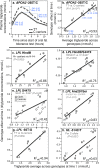
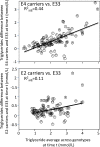
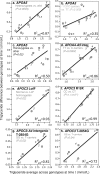
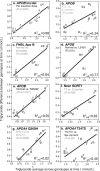

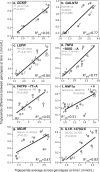
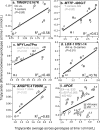


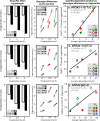

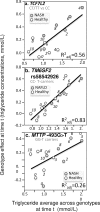

Similar articles
-
Gene-environment interactions due to quantile-specific heritability of triglyceride and VLDL concentrations.Sci Rep. 2020 Mar 11;10(1):4486. doi: 10.1038/s41598-020-60965-9. Sci Rep. 2020. PMID: 32161301 Free PMC article.
-
Quantile-Dependent Expressivity and Gene-Lifestyle Interactions Involving High-Density Lipoprotein Cholesterol.Lifestyle Genom. 2021;14(1):1-19. doi: 10.1159/000511421. Epub 2020 Dec 9. Lifestyle Genom. 2021. PMID: 33296900 Free PMC article. Review.
-
A reduction of CETP activity, not an increase, is associated with modestly impaired postprandial lipemia and increased HDL-cholesterol in adult asymptomatic women.Lipids Health Dis. 2011 May 24;10:87. doi: 10.1186/1476-511X-10-87. Lipids Health Dis. 2011. PMID: 21609439 Free PMC article. Clinical Trial.
-
Fenofibrate effect on triglyceride and postprandial response of apolipoprotein A5 variants: the GOLDN study.Arterioscler Thromb Vasc Biol. 2007 Jun;27(6):1417-25. doi: 10.1161/ATVBAHA.107.140103. Epub 2007 Apr 12. Arterioscler Thromb Vasc Biol. 2007. PMID: 17431185 Clinical Trial.
-
[A novel gene in APOA1/C3/A4/A5 cluster: apolipoprotein A5].Yi Chuan. 2004 Nov;26(6):953-6. Yi Chuan. 2004. PMID: 15640132 Review. Chinese.
Cited by
-
Quantile-specific heritability of serum growth factor concentrations.Growth Factors. 2021 Feb-Jul;39(1-6):45-58. doi: 10.1080/08977194.2022.2049261. Epub 2022 Mar 21. Growth Factors. 2021. PMID: 35312415 Free PMC article.
-
Quantile-dependent expressivity of serum C-reactive protein concentrations in family sets.PeerJ. 2021 Feb 16;9:e10914. doi: 10.7717/peerj.10914. eCollection 2021. PeerJ. 2021. PMID: 33628645 Free PMC article.
-
Quantile-specific heritability of total cholesterol and its pharmacogenetic and nutrigenetic implications.Int J Cardiol. 2021 Mar 15;327:185-192. doi: 10.1016/j.ijcard.2020.11.070. Epub 2020 Dec 6. Int J Cardiol. 2021. PMID: 33296721 Free PMC article.
-
Quantile-specific heritability of plasma fibrinogen concentrations.PLoS One. 2022 Jan 7;17(1):e0262395. doi: 10.1371/journal.pone.0262395. eCollection 2022. PLoS One. 2022. PMID: 34995330 Free PMC article.
-
Quantile-specific heritability of 8-isoprostane and the modulating effects of smoking, alcohol, cardiovascular disease and diabetes on 8-isoprostane-gene interactions.Free Radic Biol Med. 2022 Jan;178:262-270. doi: 10.1016/j.freeradbiomed.2021.11.022. Epub 2021 Dec 7. Free Radic Biol Med. 2022. PMID: 34883250 Free PMC article.
References
MeSH terms
Substances
LinkOut - more resources
Full Text Sources
Research Materials
Miscellaneous

